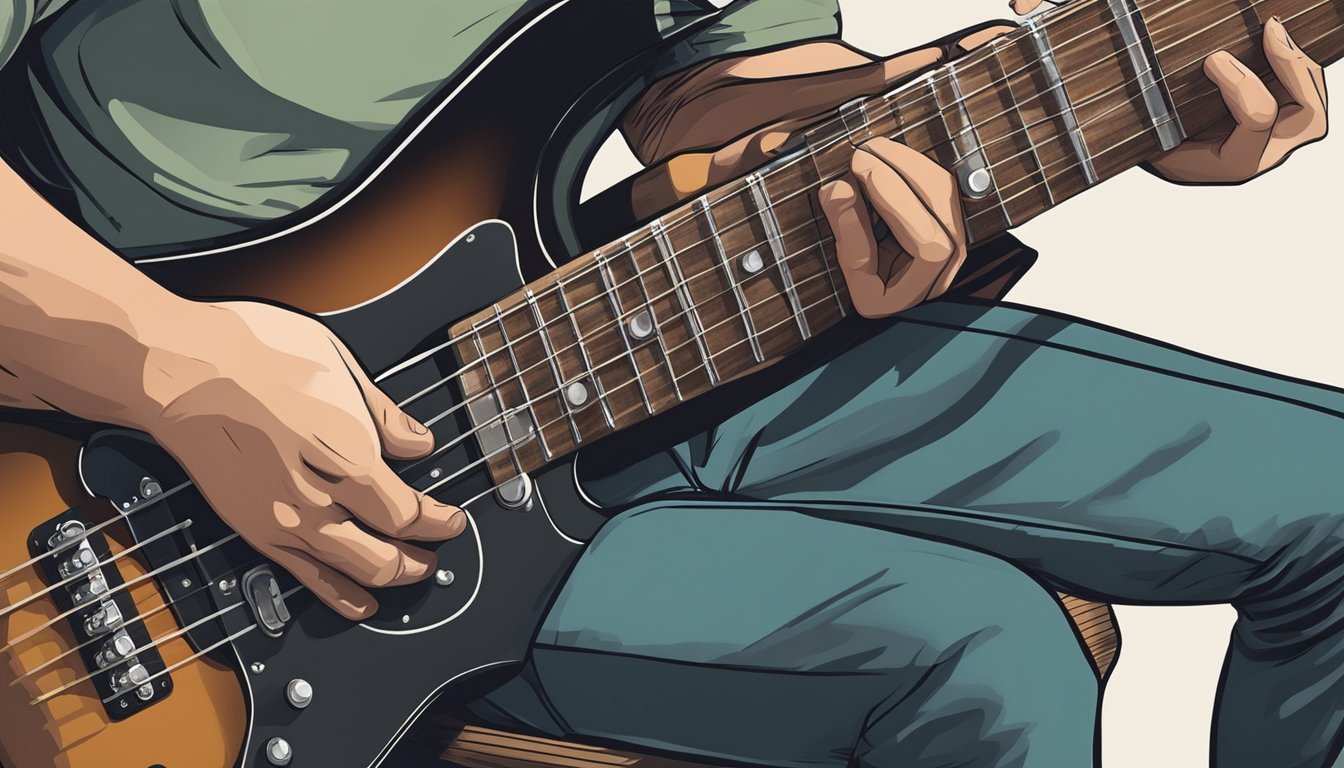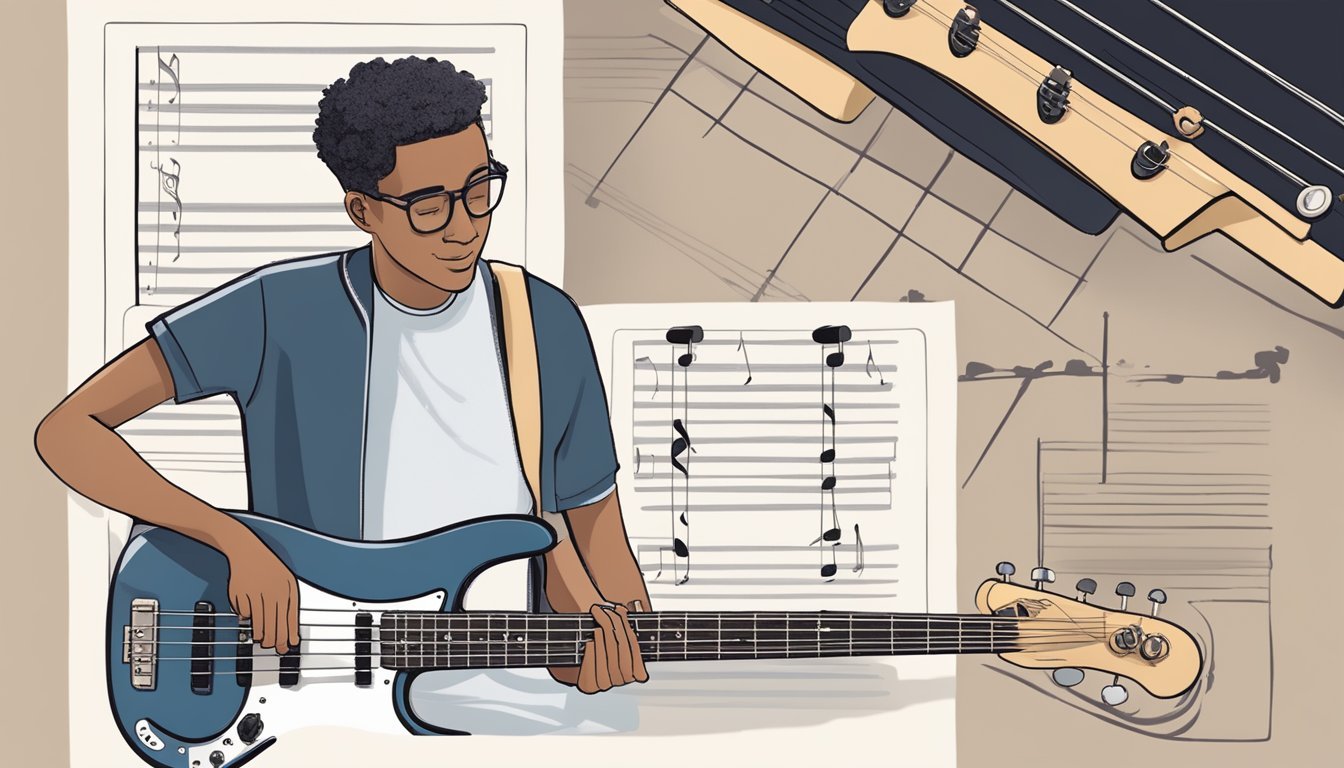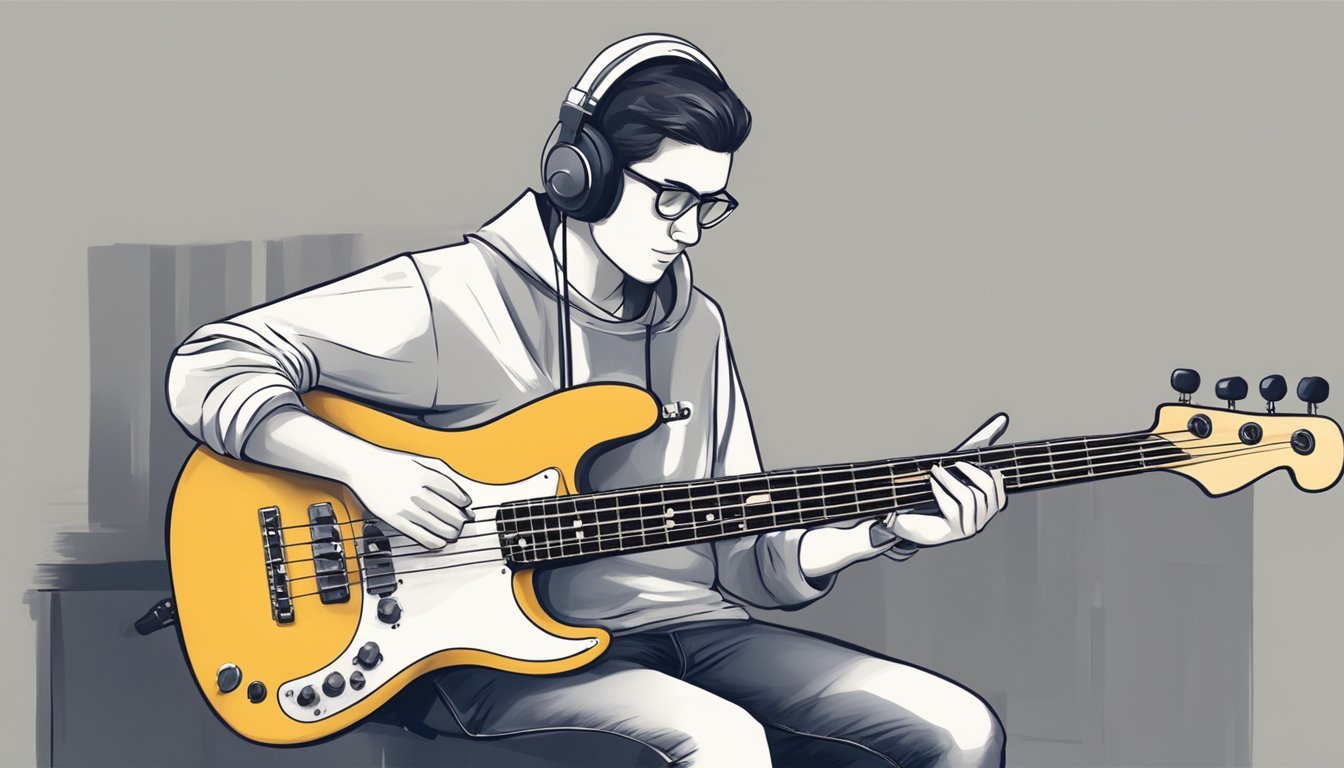Playing the bass guitar is an exciting journey, especially for beginners looking to dive into music.
With the right techniques and a solid understanding of the instrument, you can start creating rhythms that enhance your favorite songs.
Whether you’re picking up a bass for the first time or want to get back into it, there are plenty of resources, including handy PDFs, to guide you along the way.

Getting started involves familiarizing yourself with the instrument, learning the names of the strings, and practicing foundational exercises.
These skills will set you up for success as you begin to play along with music.
You’ll find that learning the bass guitar can be both fun and rewarding, giving you the ability to jam out with friends or even create your own bass lines.
As you explore this world, remember that every great bassist started somewhere.
Don’t be afraid to make mistakes; they’re part of the learning process! With dedication and practice, you’ll soon find yourself confidently playing your favorite tunes.
Key Takeaways
- You can quickly grasp the basics of playing the bass guitar.
- Regular practice of foundational techniques will improve your skills.
- Playing along with songs can make learning more enjoyable.
Getting Started with Your Bass Guitar
Starting your journey with the bass guitar can be exciting.
You’ll learn about the basic elements, how to hold your instrument correctly, and how to tune it properly.
These first steps are crucial for developing good practice habits and skills.
Understanding the Basics
Before you play, it’s helpful to know the parts of the bass guitar.
The bass typically has four strings, which are E, A, D, and G. These strings produce lower tones compared to a regular guitar.
The fingerboard is where you’ll place your fingers to create different notes.
Understanding your bass guitar’s root note is important too.
It serves as the foundation for most songs.
Learning basic techniques, like finger placement and picking, will set you up for success.
As you practice, you’ll develop muscle memory, which is key for any beginner.
Holding Your Bass Correctly
Proper posture is essential for comfort and control while playing.
Stand or sit up straight, keeping your shoulders relaxed.
If you’re sitting, let the bass rest on your lap, angled slightly towards you.
Your left-hand fingers should be curved and positioned over the fingerboard.
This allows you to press down the strings easily.
The right hand can either pluck the strings with your fingers or use a guitar pick.
If you choose a pick, alternate between your first and second fingers for better rhythm.
Tuning Your Bass
Tuning your bass guitar is crucial for clear sound.
You can use a clip-on tuner, a tuning app, or an online tuner for accuracy.
Start with the lowest string, the E string.
Here’s a quick guide to tuning:
- E (4th string) – Lowest
- A (3rd string) – Next
- D (2nd string) – Second highest
- G (1st string) – Highest
Be patient while tuning, and check each string frequently as they can go out of tune easily.
A well-tuned bass makes it much more enjoyable to learn and play songs.
Foundational Techniques and Exercises

To get started with playing the bass guitar, you need to master some key techniques and exercises.
This will help you develop your skills and build a strong foundation for your music.
Let’s break down some essential areas to focus on.
Basic Plucking and Fretting
Plucking and fretting are two of the most important techniques you’ll use.
Start by learning how to correctly hold the pick or using your fingers to pluck the strings.
If you’re using fingers, try using your thumb for the lower strings and your index finger for the higher ones.
When it comes to fretting, make sure your fingers are pressing down just behind the fret.
This helps create a clean note without buzzing.
Focus on your hand positioning and muscle memory.
A good exercise is to play the root notes of some simple chords.
This helps you get comfortable with both techniques.
Scales and Arpeggios
Scales and arpeggios are important for understanding music theory and improving your playing.
Start with the major scale, which consists of seven notes in a specific pattern.
Practice playing it across the neck of the bass.
This helps develop your finger strength and dexterity.
Arpeggios are the individual notes of a chord played in sequence.
Practice playing the root, third, and fifth notes of the chord to form a solid bassline.
Work on these exercises with a metronome to improve your timing and rhythm.
This practice will make it easier to create and play your own basslines later on.
Creating Your First Bassline
Now it’s time to put your skills into practice.
A bassline often revolves around the root notes of the chords in a song.
Begin by playing simple patterns.
Try playing a note, then skipping to another root note, and returning.
As you get comfortable, experiment with adding rhythms and syncopation to your lines.
Don’t worry about making it complex at first; keep it simple and fun.
Using modes can also help add flavor to your basslines as you progress.
This is a great way to express your style while practicing what you’ve learned in bass guitar lessons.
Playing Along with Music

Getting comfortable with your bass guitar involves more than just learning notes.
It’s crucial to understand rhythm and timing, as these elements help you stay in sync with other musicians.
Playing along with music tracks can also improve your skills and make practice more enjoyable.
Understanding Rhythm and Timing
Rhythm is the heartbeat of music.
It keeps everything together, so you want to grasp it well.
Start by listening to different bass lines and notice how they fit within the song.
Use a metronome to help practice your timing.
This device produces a steady beat that helps you stay in sync.
Learn basic note values like whole, half, quarter, and eighth notes.
This will give you a sense of how long each note should be held.
Try counting out loud as you play.
This can reinforce your ability to keep time and improve your rhythm.
Learning to Play with Tracks
Playing along with music tracks is a fun way to practice.
You can find various backing tracks online or use video lessons that focus on specific songs.
Use these to develop your ability to stay in rhythm and play bass lines.
Start with simpler songs that have clear bass lines.
Slow the track down if needed.
Focus on syncing your playing with the music.
As you get more comfortable, gradually increase the tempo.
Recording your practice can also help.
You’ll hear where you need to improve, and it adds an engaging layer to your learning.
Be patient with yourself; this practice will make your bass playing much more enjoyable over time.
Frequently Asked Questions
Learning to play the bass guitar can seem tricky at first, but with the right guidance, you can start your musical journey.
Check out these common questions from beginners like you.
Many aspiring musicians wonder about the best techniques to develop their skills and the essential gear they need.
Understanding the bass guitar basics for beginners is crucial, as it sets a solid foundation for your playing.
From learning finger placement to mastering simple scales, each step will bring you closer to becoming a confident bassist.
What’s the first step to learning bass guitar for newbies?
Your first step is to get familiar with the bass guitar itself.
Learn about its parts, like the neck, strings, and body.
Understanding how the instrument works makes it easier to learn how to play.
Can I teach myself to play the bass guitar, and if so, where should I start?
Yes, you can definitely teach yourself! Start with online resources, beginner tutorials, or books.
Look for materials that focus on the basics so you can build a strong foundation.
What are some good books or PDFs for beginner bass guitar players?
There are several great options.
You can check out “Beginner Bass Guitar” from TalkingBass or “Teach Yourself To Play Bass” from Alfred Music.
These resources offer structured lessons and practical exercises.
How do I read bass guitar notation for a 4-string instrument?
Reading bass guitar notation is all about mastering the staff and notes.
Familiarize yourself with the notes on each string.
You can find charts that show which notes correspond to each fret.
Is it hard to switch from a regular guitar to a bass guitar?
Switching can be a bit of an adjustment, mainly because the bass has fewer strings and focuses on rhythm rather than melody.
Still, if you already play guitar, you have a head start on understanding music theory.
What are the basic techniques I should master when starting out on the bass?
Focus on essential techniques like finger placement, plucking, and simple scales.
Practice playing along with tracks to develop your timing and rhythm.
These skills will help you as you progress.

